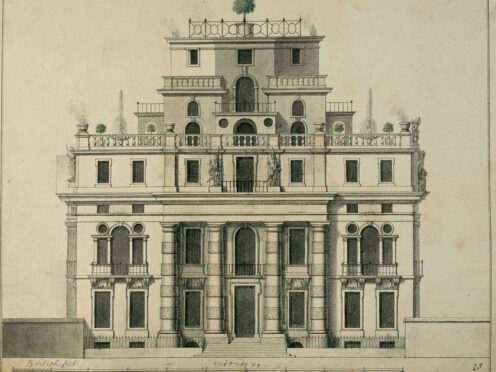A specialist team has started the first survey of an estate conceived by an Earl which combined industrial innovation with ornamental design.
Researchers launched the survey on Mar Estate, Clackmannanshire, in the hope that it will make the site more publicly accessible and support moves to secure formal recognition and protection of key features.
John Erskine, the sixth Earl of Mar (1675-1732), made the estate one of Scotland’s earliest industrial improvement schemes, supplying fresh water to the new town of Alloa and the destructive effects of frequent flooding and drought.
It also provided energy for mills and breweries, powered a large wheel for draining coal mines and created a series of sluices on the foreshore of the Forth estuary to deepen Alloa’s harbour.
Work started on the scheme in 1701 and was almost complete when Mar was exiled for backing the failed Jacobite Rising of 1715.
By the middle of the 18th century, the scheme had succeeded in turning Alloa into an industrial powerhouse.
The new survey will focus on the northern part of Mar’s original plan and will include the Gartmorn hydraulic scheme – with its weir, aqueduct and reservoir and dam.
Mar’s idea for the dam and aqueduct was inspired by schemes the eminent landscapist Alexander Edward had seen in France and reported on to Mar.
The scheme was executed by the celebrated English engineer George Sorocold who, before his arrival in Alloa, had built the London Waterworks.
The survey also covers two circular plantations – Octagon Wood and Cowpark Wood.
These were also designed in the fashionable French style, and the team hopes to find out more about who planted them and when.

Octagon Wood was severely damaged during Storm Arwen in 2021.
It remains open to public access but this is difficult owing to windblown trees.
The plan is to replant the woodland with native trees to encourage regeneration and wildlife.
It is hoped survey team members will undertake a second phase examining the southern section of Mar’s plan towards the Firth of Forth, which was modelled on the parks at Versailles.
The project brings together specialists whose skills include historical research, aerial photography, land surveying and digital mapping.
Researchers say the survey outcomes are essential for informed decision-making about how to regenerate the surviving woodland and hydraulic scheme.
They also hope the project will encourage new uses for the site and pave the way for improved leisure and study facilities.
Margaret Stewart, lecturer in Architectural History at Edinburgh College of Art, says: “The Mar estate is a landscape of international significance but, inexplicably, no integrated survey of it has ever been undertaken by any official body in Scotland.
“It is one of the finest formal gardens and most sophisticated industrial landscapes ever created – there is still a huge amount of information to be recovered from detailed mapping and land surveying.”
